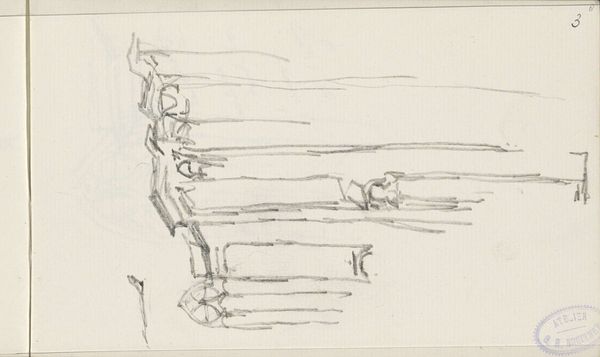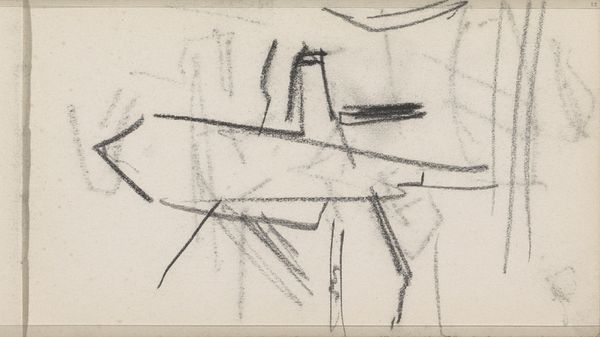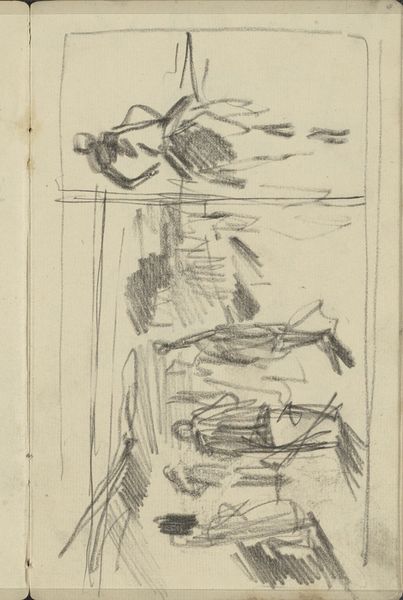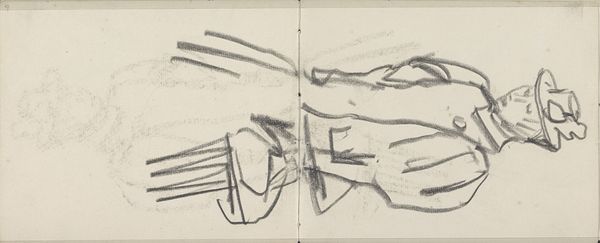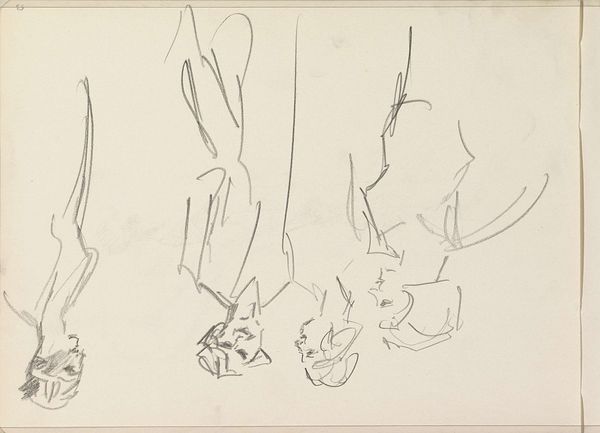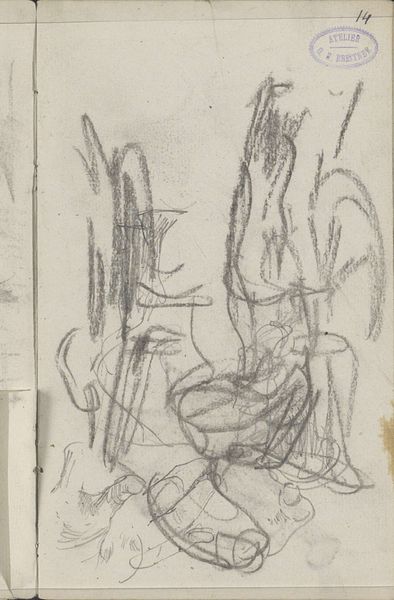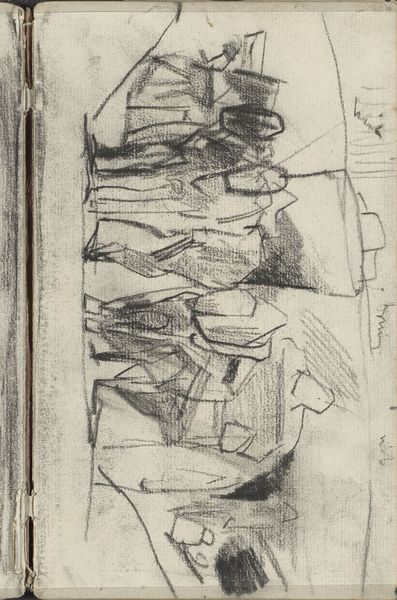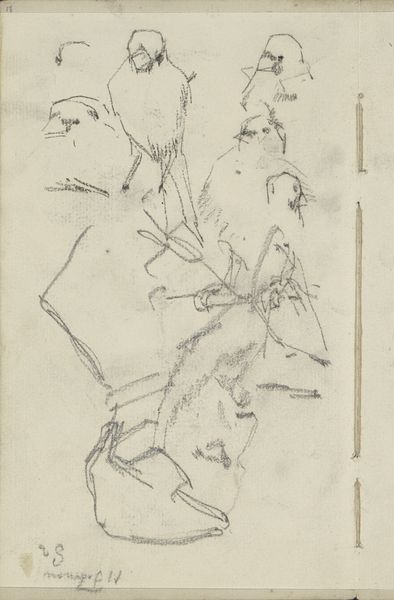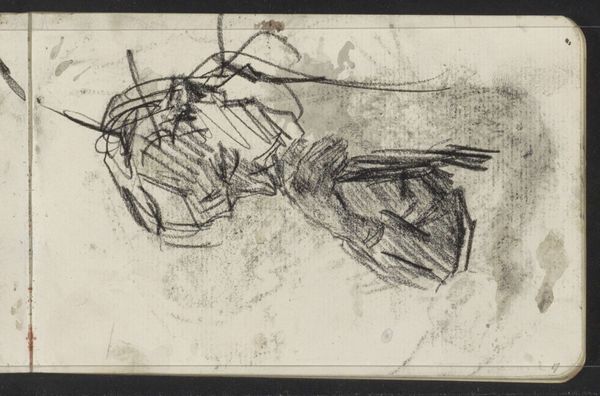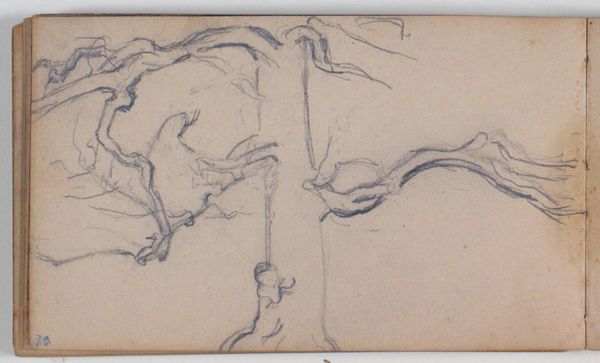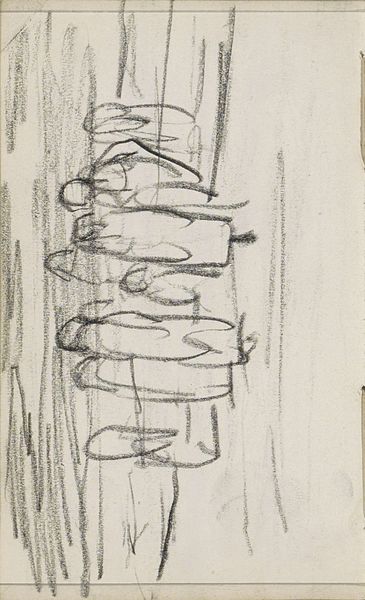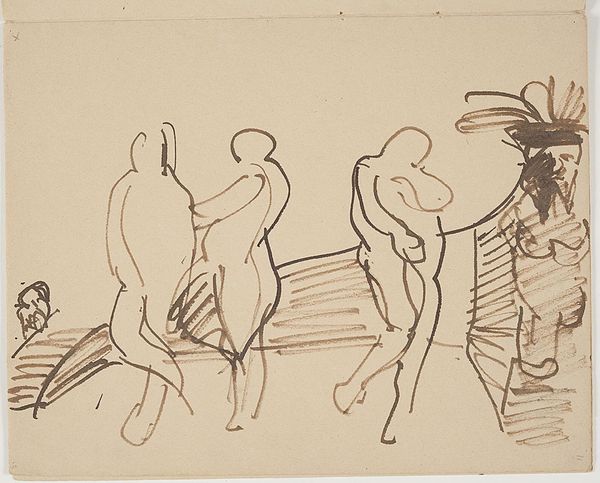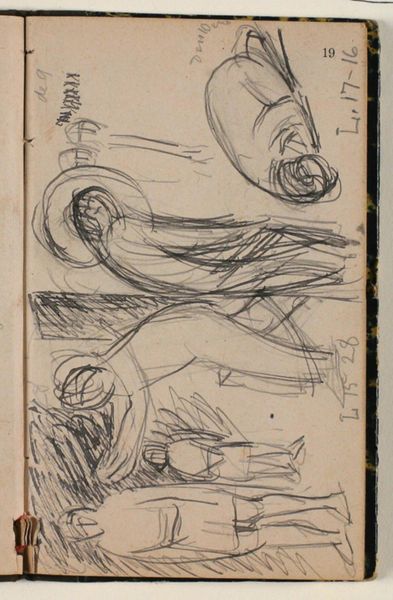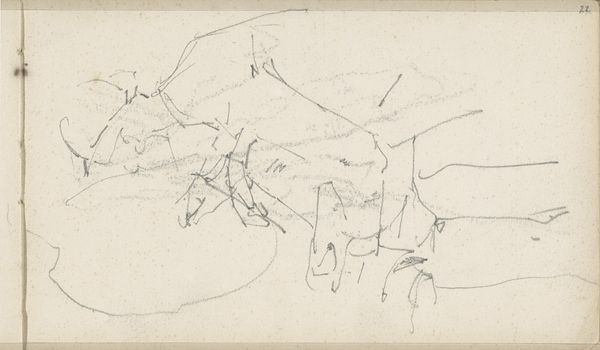
drawing, charcoal
#
portrait
#
drawing
#
german-expressionism
#
figuration
#
soldier
#
line
#
charcoal
#
history-painting
Dimensions: 11.4 x 18.3 cm
Copyright: Public domain
Curator: This is "Pulling Soldiers", a charcoal drawing by Ferdinand Hodler, created around 1908. Editor: It’s strikingly austere, isn’t it? Those sharp lines and stark figures evoke a real sense of grim duty and…suffering, even. Curator: Indeed. Notice how Hodler utilizes repetition. He's arrayed these figures across the frame like modular elements, creating a rhythmic, almost decorative pattern that both enhances and diminishes the individuality of each soldier. Semiotically, this can be interpreted as a statement on the homogenizing effect of military service. Editor: From a historical perspective, it is interesting to consider this was made pre-World War I. You have the build-up of tension in Europe at the time which led to widespread unease around militarization and conscription. Were these meant to be portraits, or ciphers representing a larger social concern? Curator: Hodler’s treatment certainly transcends mere portraiture. While grounded in figuration, his reduction of form moves beyond realism. The lack of distinct facial features also turns these individuals into types— soldiers defined by their function, a commentary on their reduced status within society. Editor: That bold charcoal technique also speaks to that loss of individuality. There's almost a frantic quality to the lines. You can feel the pressure and, maybe even, the internal conflict. This also departs, of course, from earlier more heroic or romanticized visions of soldiering in prior academic or Salon art. Curator: Precisely. Hodler’s drawing prefigures German Expressionism with his rendering of psychological strain. This technique underscores the overall feeling of foreboding – which as you’ve already suggested feels particularly potent knowing when this work was made. Editor: Thinking about the context makes me reflect how potent images of this kind have been over time for political discussions – even in sketches or early forms. It raises a wider question about the artist’s role in highlighting often overlooked voices or the dangers of conflict. Curator: A pertinent question indeed, prompting a look past technique and composition, into the social framework art creates and exists within. Editor: Well put; perhaps these "soldiers" pull not only equipment, but a critical analysis of war as well.
Comments
No comments
Be the first to comment and join the conversation on the ultimate creative platform.
